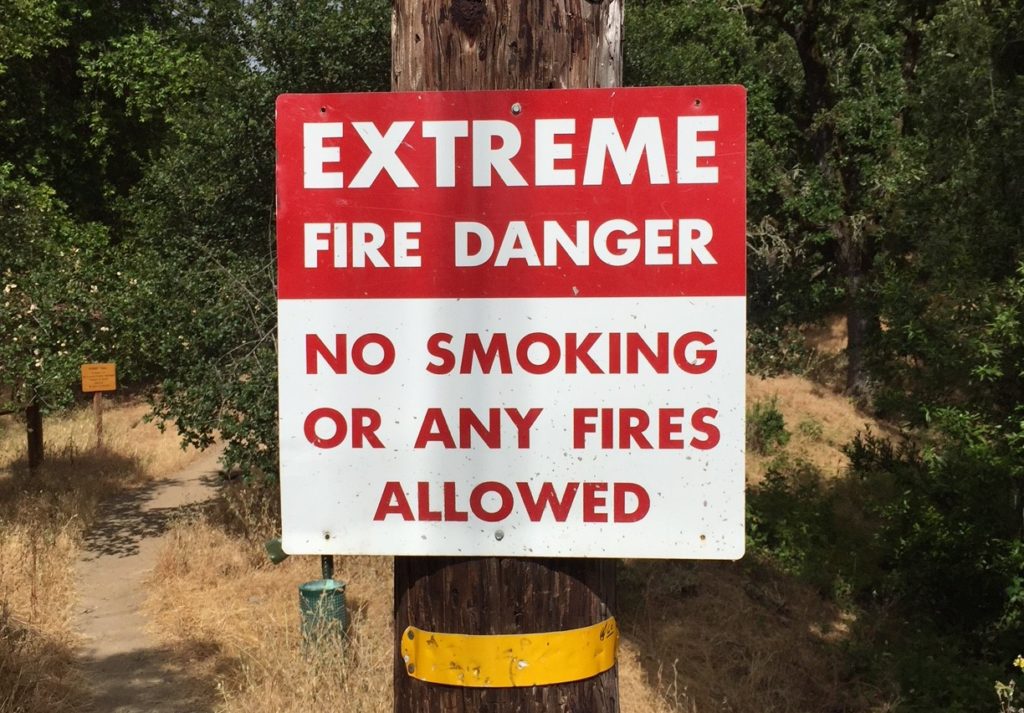Creating a Fire-Safe Defensible Space

With fire season in full swing, California residents need to be vigilant about maintaining fire-safe conditions on their properties. Photo: Suzanne Carroll (2017)
One of the most critical aspects of fire safety is creating a “defensible space” around your home: a 100-foot radius of property that’s specifically maintained to minimize fire risks. However, defensible space is often misunderstood—a lot of people think it merely consists of clearcutting all trees, shrubs and bushes within 100 feet of their homes, but this oversimplifies the matter. In reality, creating a defensible space involves a specific strategy.
A properly designed defensible space consists of two zones: Zone 1, which extends 30 feet from the house, and Zone 2, which extends 70 feet from Zone 1. In Zone 1, any dead vegetation should be removed or, in the case of grass and weeds, cut down to a height of no more than two inches. Don’t forget to remove dead plant materials that have fallen on the ground (leaves, twigs, pine needles). Additionally, Zone 1 should be free of firewood, building materials and other combustible items; these should be relocated to Zone 2 to maintain an adequate distance from the home’s structure.
In Zone 2, all weeds and grass should be mowed down to a height of no higher than four inches. Trees, bushes and shrubs should be well-trimmed, with the aim of creating horizontal spaces between them. Furthermore, space should be maintained between shrubs and any grass that surrounds them. Having these spaces between trees, bushes and shrubs will help prevent fire from spreading.
When combined, these two zones comprise a 100-foot defensible space around your home and make your property fire-safe. Keep in mind that maintaining a fire-safe property isn’t merely an optional precaution—it’s the law, as mandated by California Code 4291.
Lastly, in the course of creating a defensible space, make sure you’re performing the work in a safe manner. Sparks from landscaping equipment are a common cause of fire, so take precautions. Do the work early in the morning when it’s cool. Don’t do it on a windy day, and definitely don’t do it on a hot, windy day—that’s a good way to inadvertently start a fire while trying to prevent it.
For more information about fire prevention, check out the CAL FIRE website.